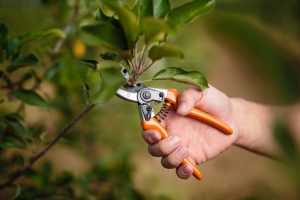The jacaranda tree, with its stunning violet blossoms and graceful branches, is a familiar sight in many parts of the world. Renowned for their beauty, jacaranda trees also play a significant role in enhancing environmental quality. As we navigate the complexities of climate change and urbanization in 2024, these trees offer numerous ecological benefits that are increasingly vital. This article delves into the various ways jacarandas contribute to a healthier environment.
Enhancing Urban Aesthetics And Air Quality
Cities often suffer from air pollution, a persistent problem exacerbated by heavy traffic and industrial activities. Planting jacaranda trees in urban areas can significantly mitigate this issue. The jacaranda tree is highly efficient at absorbing carbon dioxide and other harmful pollutants from the atmosphere. Additionally, the dense canopy provides shade, reducing the heat island effect commonly experienced in cities. This cooling effect not only makes urban environments more liveable but also decreases the energy demand for air conditioning, indirectly reducing carbon emissions.
Moreover, the vibrant blossoms of the jacaranda tree attract tourists and locals alike, fostering a sense of community and pride. Such aesthetic enhancements can lead to increased property values and a greater willingness among residents to invest in local green initiatives. Thus, jacaranda trees serve both practical and psychological functions, improving overall urban well-being.
Supporting Biodiversity
Jacaranda trees are more than just visually appealing; they also play a crucial role in supporting local biodiversity. The trees provide habitat and food for a variety of birds, insects, and other wildlife. Birds, in particular, are attracted to the jacaranda tree for nesting and feeding on insects found within the foliage. This natural interaction supports the broader ecosystem, promoting a balanced and diverse biological community.
Insects such as bees and butterflies are also drawn to the jacaranda’s flowers, aiding in pollination processes that are essential for maintaining plant biodiversity. As urbanization continues to encroach on natural habitats, the presence of jacaranda trees in parks and gardens becomes increasingly important for sustaining these vital ecological relationships.
Soil Improvement And Erosion Control
One of the lesser-known benefits of jacaranda trees is their ability to improve soil quality and control erosion. Their extensive root systems stabilise the soil, reducing the risk of erosion, particularly in areas prone to heavy rainfall. This stability is crucial for maintaining the integrity of landscapes and preventing the loss of fertile topsoil.
Furthermore, jacaranda trees contribute organic matter to the soil through leaf litter. As leaves decompose, they enrich the soil with nutrients, enhancing its fertility and structure. This natural process supports the growth of other plants and reduces the need for chemical fertilizers, promoting a more sustainable approach to land management. For more insights on sustainable gardening practices, you can explore this article on eco-friendly gardening tips.
Climate Resilience
Climate change presents numerous challenges, including increased frequency and intensity of extreme weather events. Jacaranda trees contribute to climate resilience in several ways. Their ability to sequester carbon helps mitigate the effects of greenhouse gases, a critical factor in combating global warming. Additionally, the shade provided by jacaranda trees reduces surface temperatures, which can help moderate local climate conditions.
During periods of drought, jacaranda trees are relatively drought-tolerant once established. This resilience makes them suitable for regions facing water scarcity, as they require less irrigation compared to other ornamental trees. By incorporating jacaranda trees into urban and rural landscapes, communities can enhance their resilience to the impacts of climate change, fostering a more sustainable and adaptable environment.
Promoting Mental Health And Wellbeing
The presence of green spaces and trees, such as jacarandas, has been linked to numerous mental health benefits. Exposure to natural environments can reduce stress, anxiety, and depression, contributing to overall well-being. The jacaranda tree, with its soothing color palette and serene ambiance, offers a perfect setting for relaxation and mindfulness.
Moreover, communities with abundant green spaces encourage outdoor activities, fostering physical health and social interactions. In urban settings, these trees can provide a welcome escape from the hustle and bustle, offering residents a place to unwind and connect with nature. For further reading on how nature impacts mental health, you might find this blog post on the benefits of nature walks insightful.
Conclusion
The jacaranda tree is not just a feast for the eyes; it is a powerhouse of environmental benefits. From enhancing urban aesthetics and improving air quality to supporting biodiversity and promoting mental health, jacaranda trees play a multifaceted role in fostering a sustainable and healthy environment. As we look towards 2024 and beyond, the importance of these trees in our urban and rural landscapes cannot be overstated.
By understanding and leveraging the benefits of jacaranda trees, we can take meaningful steps towards a greener and more resilient. This cooling effect not only makes urban environments more liveable but also decreases the energy demand for air conditioning, indirectly reducing carbon emissions. Additionally, the shade provided by jacaranda trees reduces surface temperatures, which can help moderate local climate conditions.











